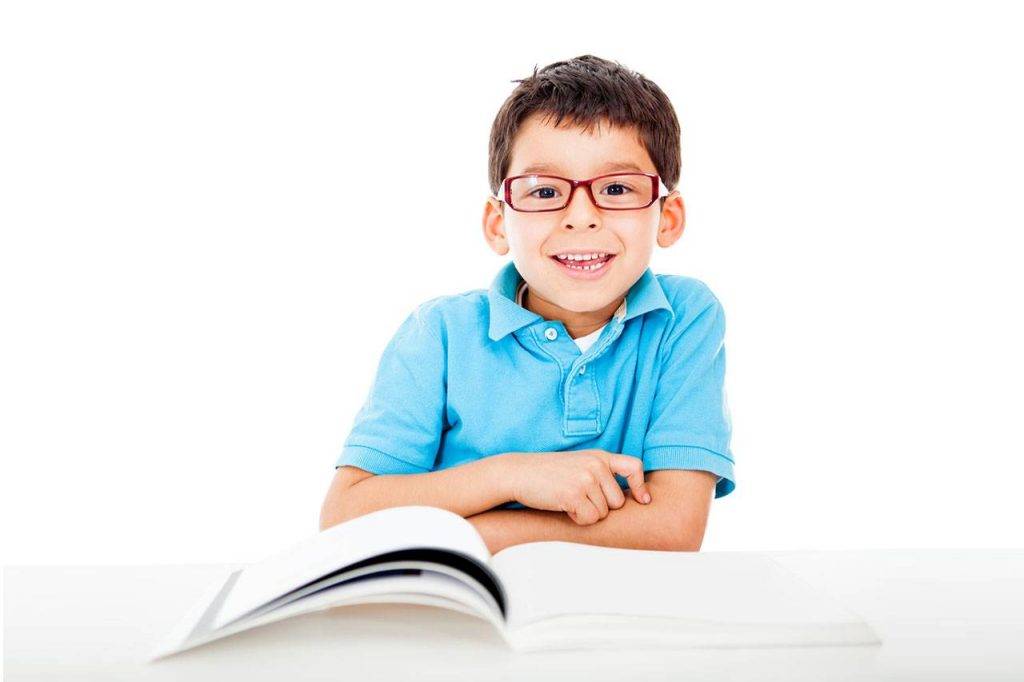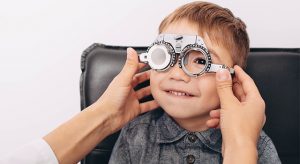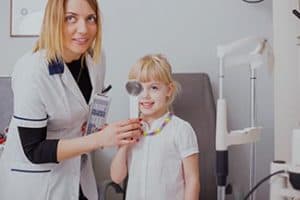Has your optometrist prescribed reading glasses for your child?
When people think of reading glasses, they generally think of older adults with presbyopia— a condition that naturally occurs with age and requires the use of reading or computer glasses to see clearly.
Reading glasses for children, typically referred to as “low plus” lenses, are not prescribed for the same reason as they are for older adults, but rather to support the focusing skills necessary for near vision activities.
Low plus lenses are also called “support lenses” or “stress-relieving lenses”, as they help to reduce the amount of focusing effort required for reading, writing, computer use and even classroom learning.
Why do optometrists prescribe low plus lenses?
Your child’s optometrist may recommend low plus lenses for any of the following vision conditions:
- Farsightedness. Children who are farsighted often have difficulties seeing near objects and images clearly. As a result, their eyes need to exert extra effort to obtain clear vision while reading and performing other near vision tasks— often leading to eyestrain, headaches and fatigue.
Low plus lenses provide clear vision while supporting the eyes’ focusing muscles and reducing the amount of effort needed to maintain clear and comfortable vision.
- Focusing support. Children who have focusing difficulties often complain of headaches and eyestrain when performing near vision tasks, such as reading and computer work.
Low plus lenses lower the amount of focusing effort required, reduce the stress on the eyes and enable clear and comfortable vision.
If your child is reading below grade level, contact an eye doctor near you who can diagnose and treat any visual issues impacting your child.
SEE RELATED: How to Improve Your Child’s Reading Skills
Are there different types of low plus lenses?
Yes. A low plus lens can be prescribed as a single vision lens, bifocal or a multifocal lens.
A single vision lens contains a single power for either distance or near vision, while a bifocal or multifocal lens contains various powers for both distance and near vision.
Bifocal or multifocal lenses may be prescribed if your child already wears optical lenses for distance vision, but also requires low plus lenses to support their near vision.
Low plus lenses may also be prescribed in combination with prism lenses which help to further reduce the stress on the visual system.
Who can benefit from low plus lenses?
Recent research has shown that wearing low plus lenses while reading significantly reduces the strain on the visual system, while improving reading fluency, speed, intonation, and comprehension.
Low plus lenses can be a powerful support for children with focusing difficulties, reading or learning difficulties, attention issues, lazy eye and special needs.
Will my child always need reading glasses?
No. As your child’s eyes develop and mature, their focusing skills will likely mature as well— eliminating the need for reading glasses.
Vision therapy can further improve your child’s focusing skills, along with any other visual skills that may need strengthening. Moreover, a program of vision therapy can help to reduce your child’s chances of needing reading glasses in the future.
LEARN MORE: Guide to Children’s Eye Exams
If you think your child can benefit from low plus lenses, schedule an eye exam with an optometrist.
Through a comprehensive evaluation of your child’s vision and visual skills, your eye doctor can determine if low plus lenses can improve your child’s vision— to make reading and learning easier and more enjoyable.










